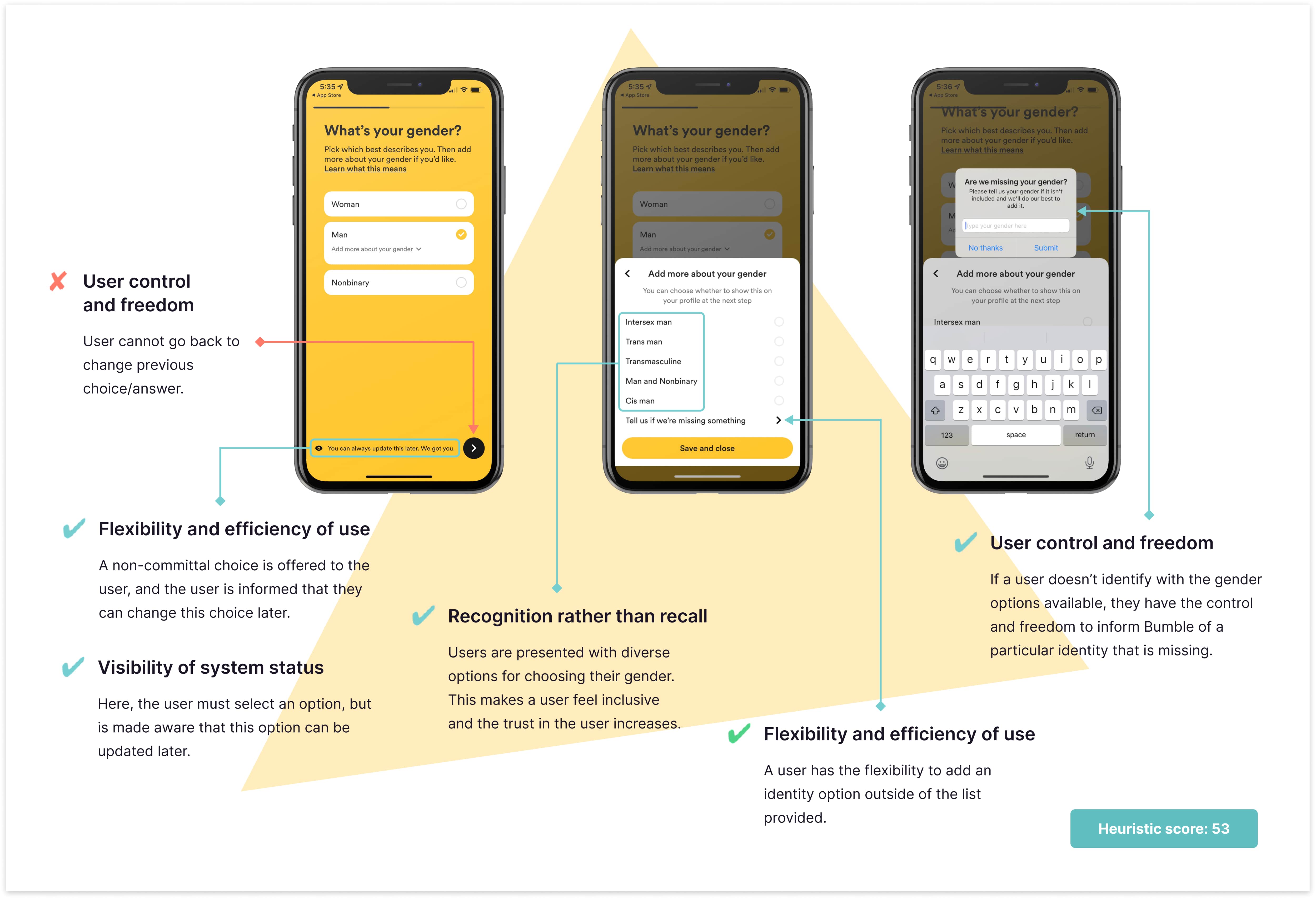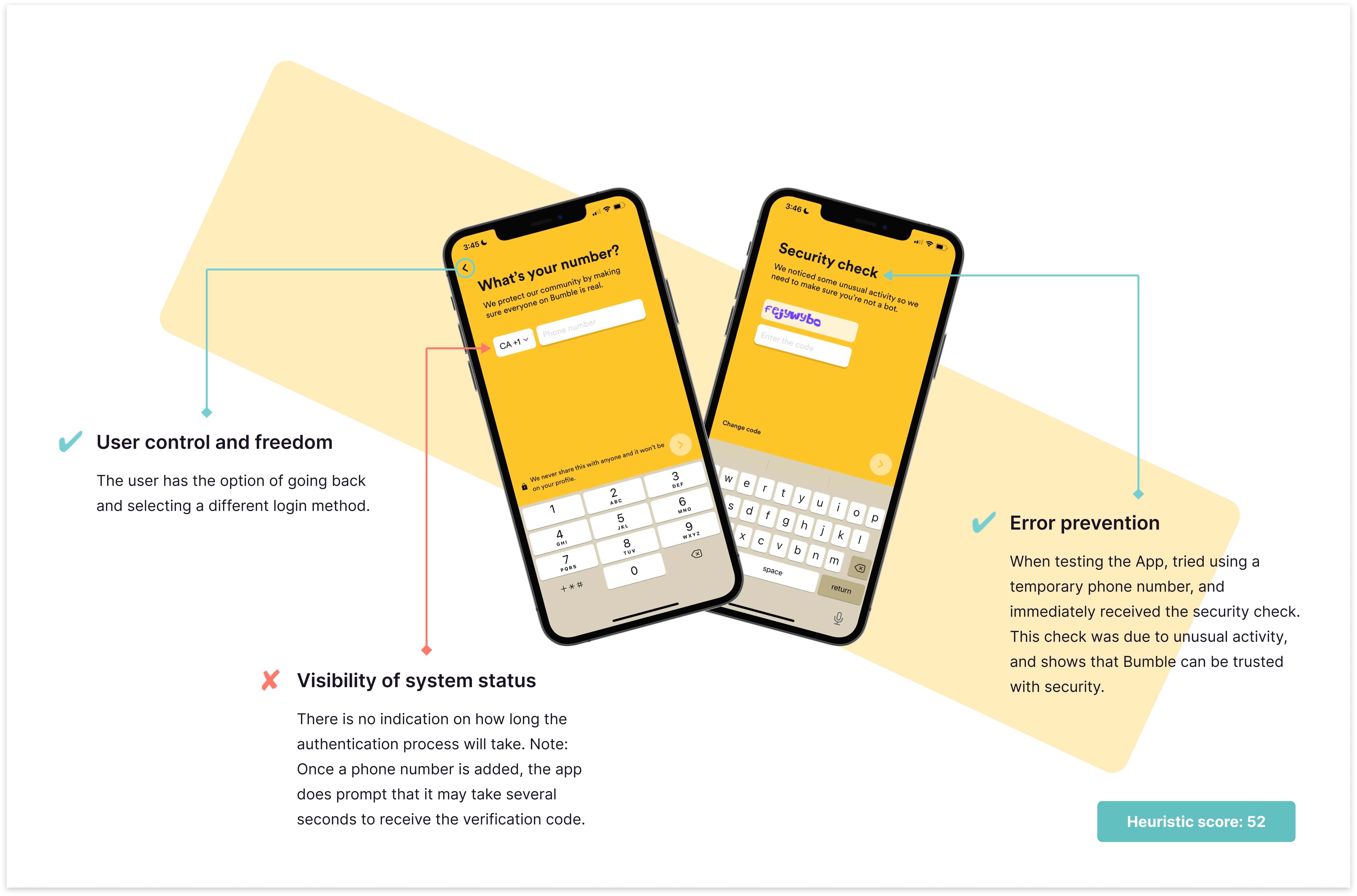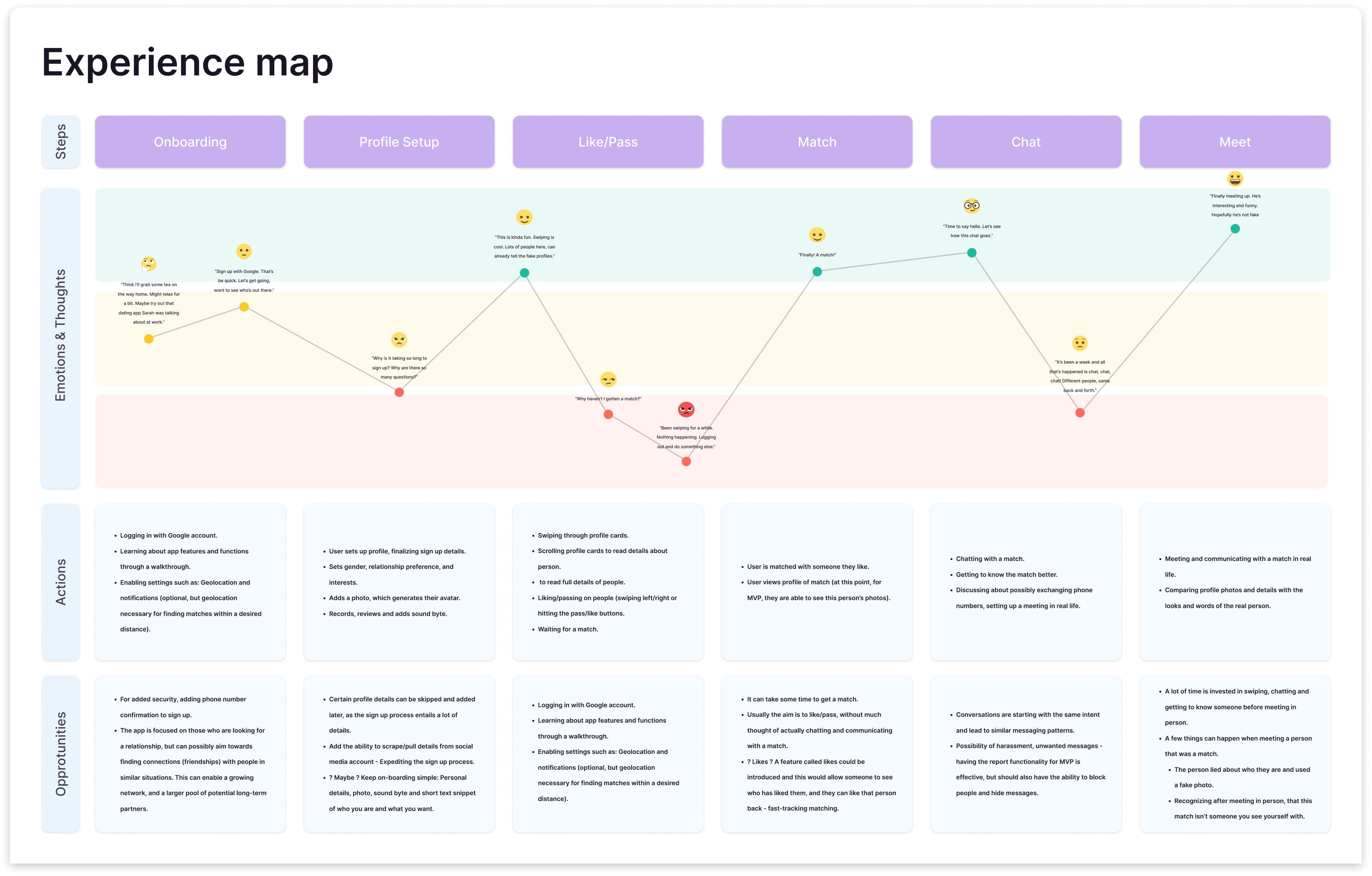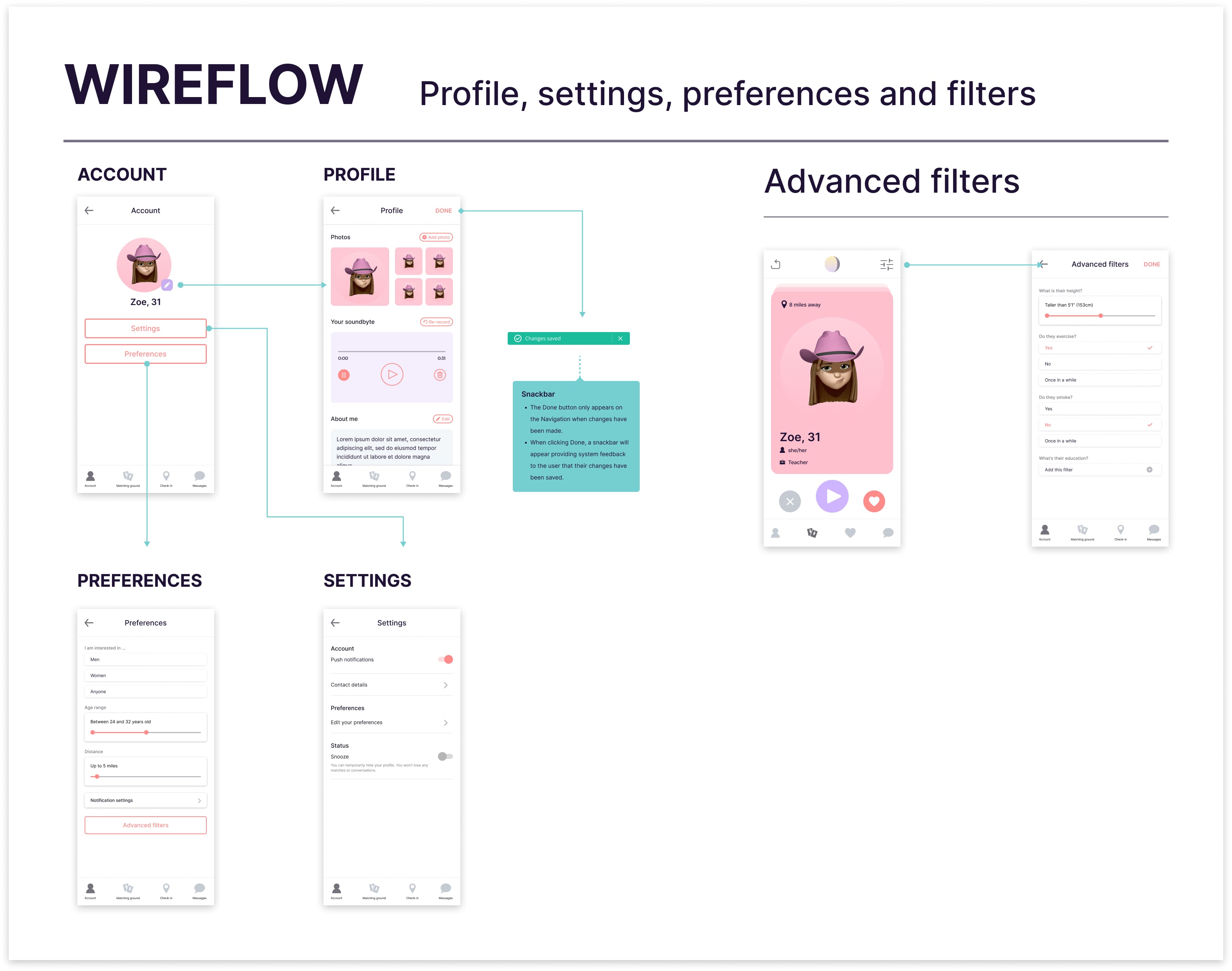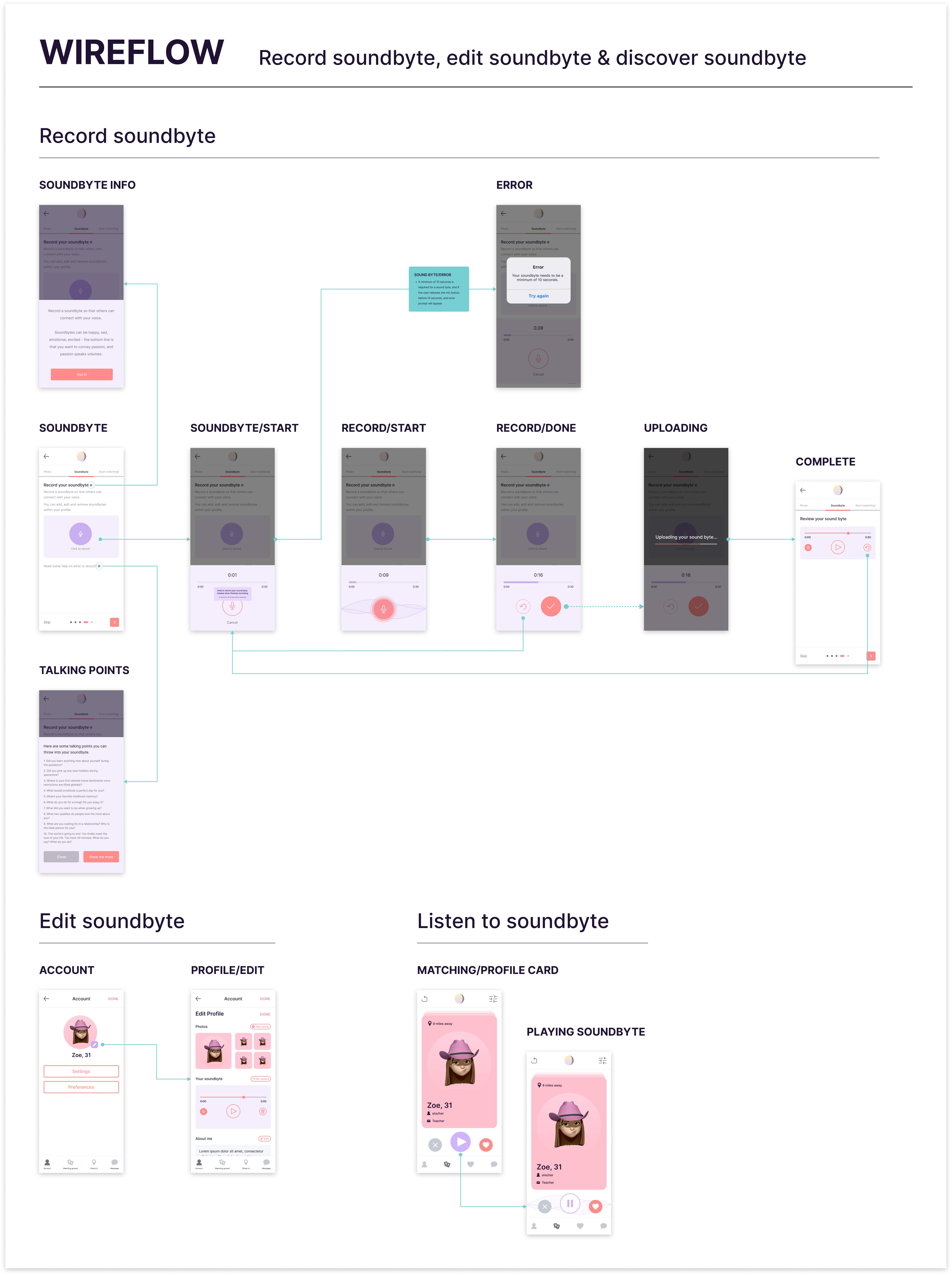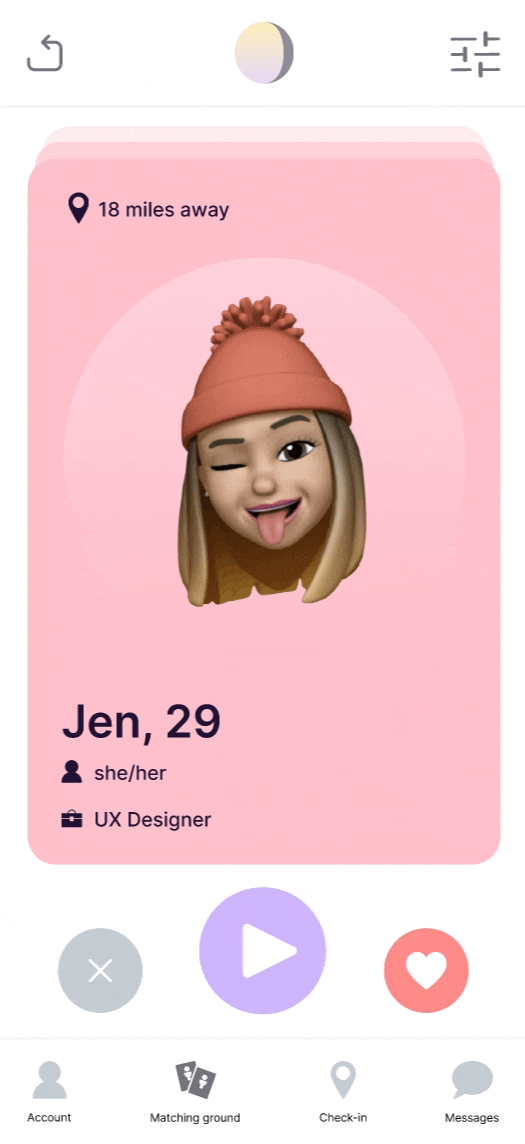Collaborated with the founder to evolve their voice-first dating app—clarifying product vision, refining user flows, and creating a more intuitive, emotionally resonant experience that prioritizes authenticity over appearance.
TL;DR
Background
SwoonMe is a voice-first, avatar-based dating app created to counteract the superficiality of photo-driven platforms. Rather than relying on appearance alone, SwoonMe allows users to form connections through voice interactions and meaningful icebreakers, revealing a potential match's avatar only after initial engagement.
Designed for singles looking for long-term relationships, SwoonMe aims to replace "doom-swiping" (mindlessly swiping with little intention to connect) with deeper, more human interactions.
Team & role
Role
Lead Product Designer
Team
Tanvi (Founder/PM), Bryce (Engineer), Allie (Marketing) & Myself (Design)
Tools & Methods
Figma, Asana, Research, Wireframing, Wireflows, Prototyping, Usability testing, User interviews, QA testing
Duration
6 mo.
Recognizing the problem
Most mainstream dating apps adopt a “photo-first” approach, where users make decisions based largely on physical appearance. This behavior leads to shallow engagement, ghosting, and a lack of meaningful connections..
We articulated the problem as: "How can a mobile dating app be improved to increase the number of real connections that lead to long-term relationships?"
Defining the MVP
At this stage, research had provided a lot of valuable insights and we shifted our focus to defining our MVP.
We decided on the features we believed would be valuable to users and remained steadfast on our vision of a voice-first, avatar-based dating app solution.
Through audio snippets (which we dubbed "sound bytes"), the voice of a potential match could be heard and allow for a more meaningful connection rather than simply basing decisions on photos. Utilizing avatars - before revealing real photos - was a strategy to ensure people did not get stuck on physical attributes. Finally, icebreakers would ensure a conversation is actually started.
- Must-Have Features: Onboarding, Voice "sound bytes", Profile creation & preferences, Matching interface & profile cards, Match list and messaging.
- Nice-to-Have Features (revisited post-MVP): Icebreakers, Check-in (location-based feature). *Both features were initially scoped for MVP but were postponed after testing revealed complexity in implementation and user understanding.
Prototyping & testing
Wireflows
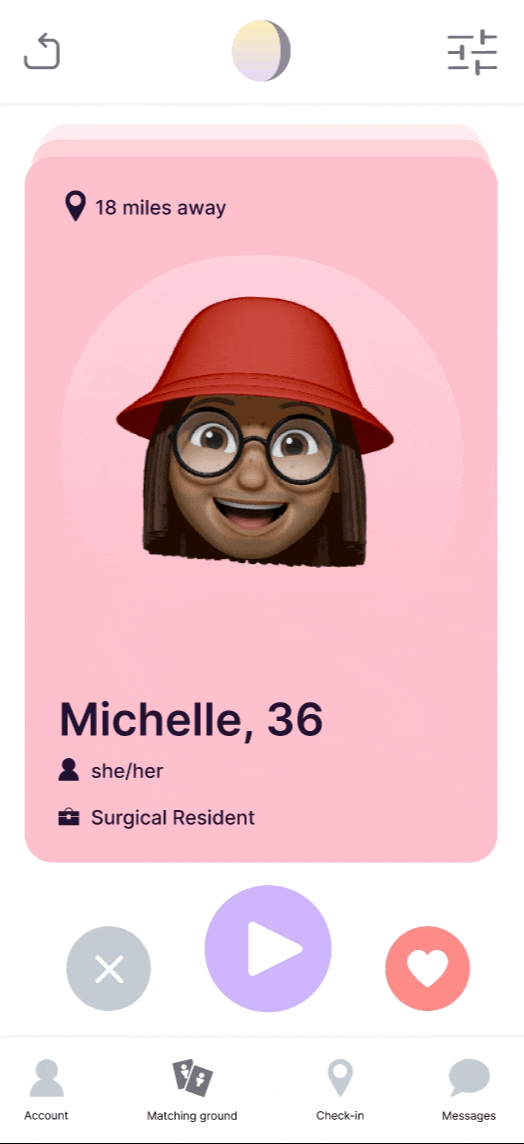
Hi-fi prototype
A high-fidelity prototype was designed for further testing. The prototype combined visual design and interactivity that allowed us to test work flows and task success rates.
Looking back & the future
- A New Domain. Transitioning from healthcare and network technology to online dating was a unique challenge, but one that allowed me to grow quickly by diving deep into a new user base and behavioral patterns.
- Personal Growth. I had full autonomy in concepting and designing dynamic, user-centered solutions. Close collaboration with cross-functional teams was essential, and through strong communication and healthy tension, we translated an idea into a testable product.
- Next Steps. Although I departed before launch, I completed designs for a gamified icebreaker feature, adding an element of fun and increasing engagement. Future plans included testing and refining this feature and expanding the telepresence experience through avatar enhancements and in-app voice interactions.


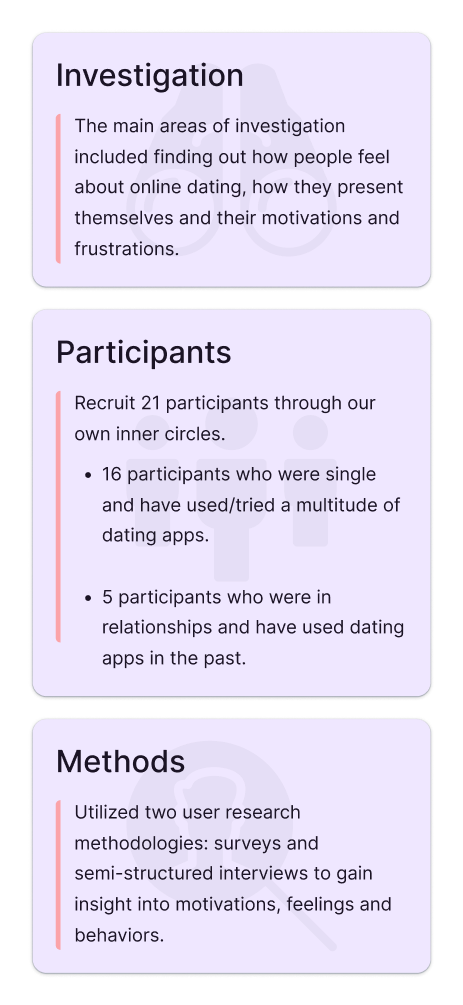
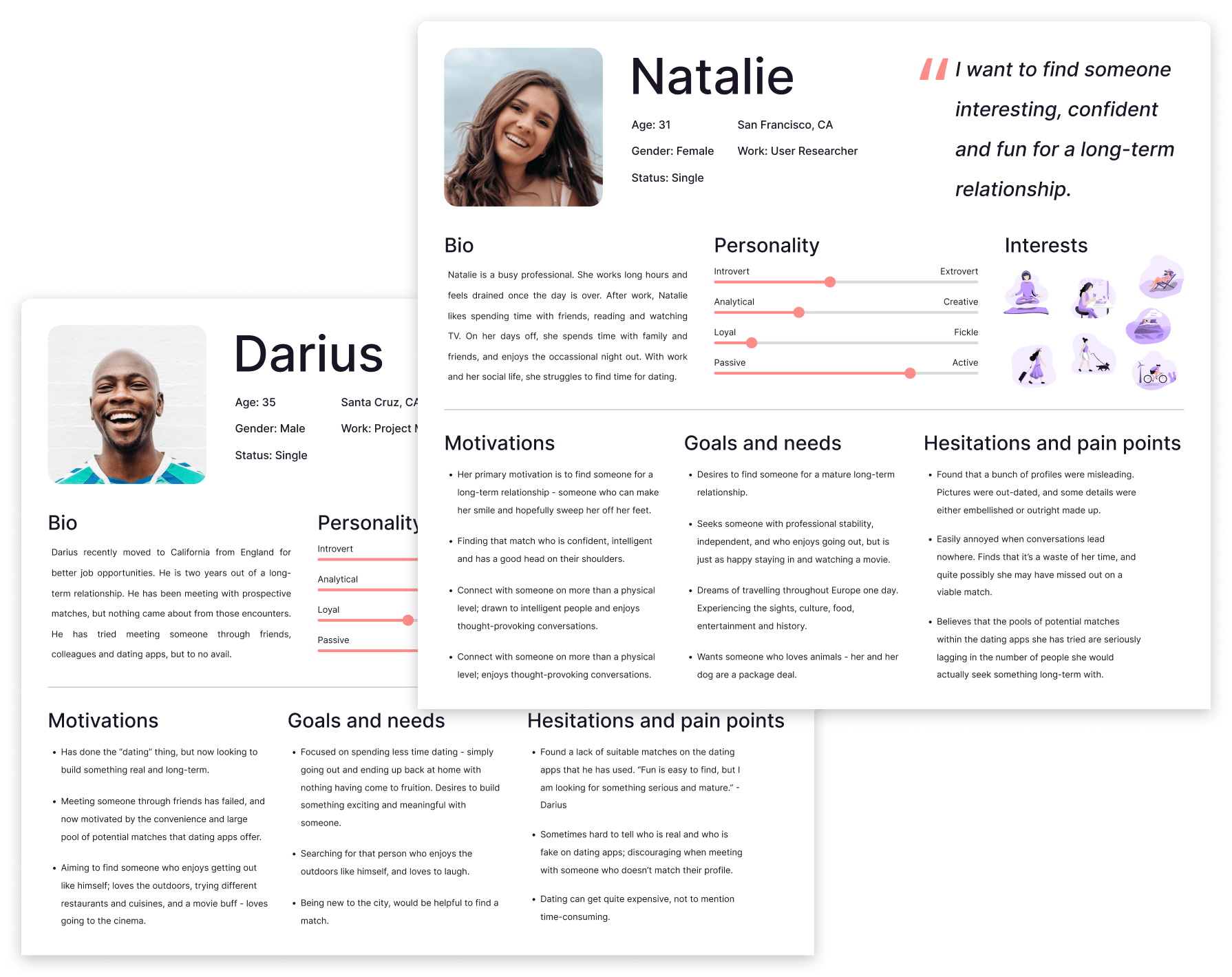

 )
)  )
) 